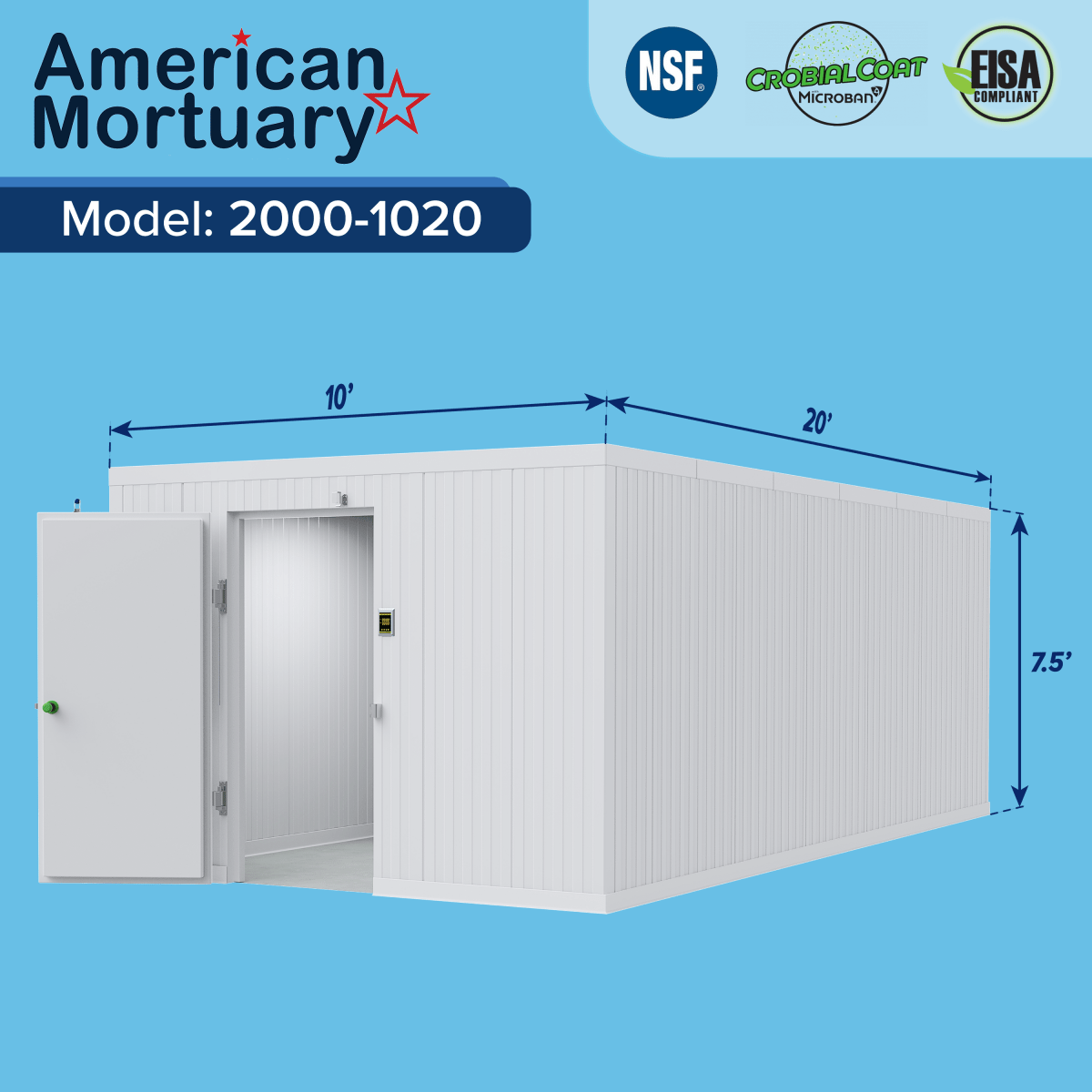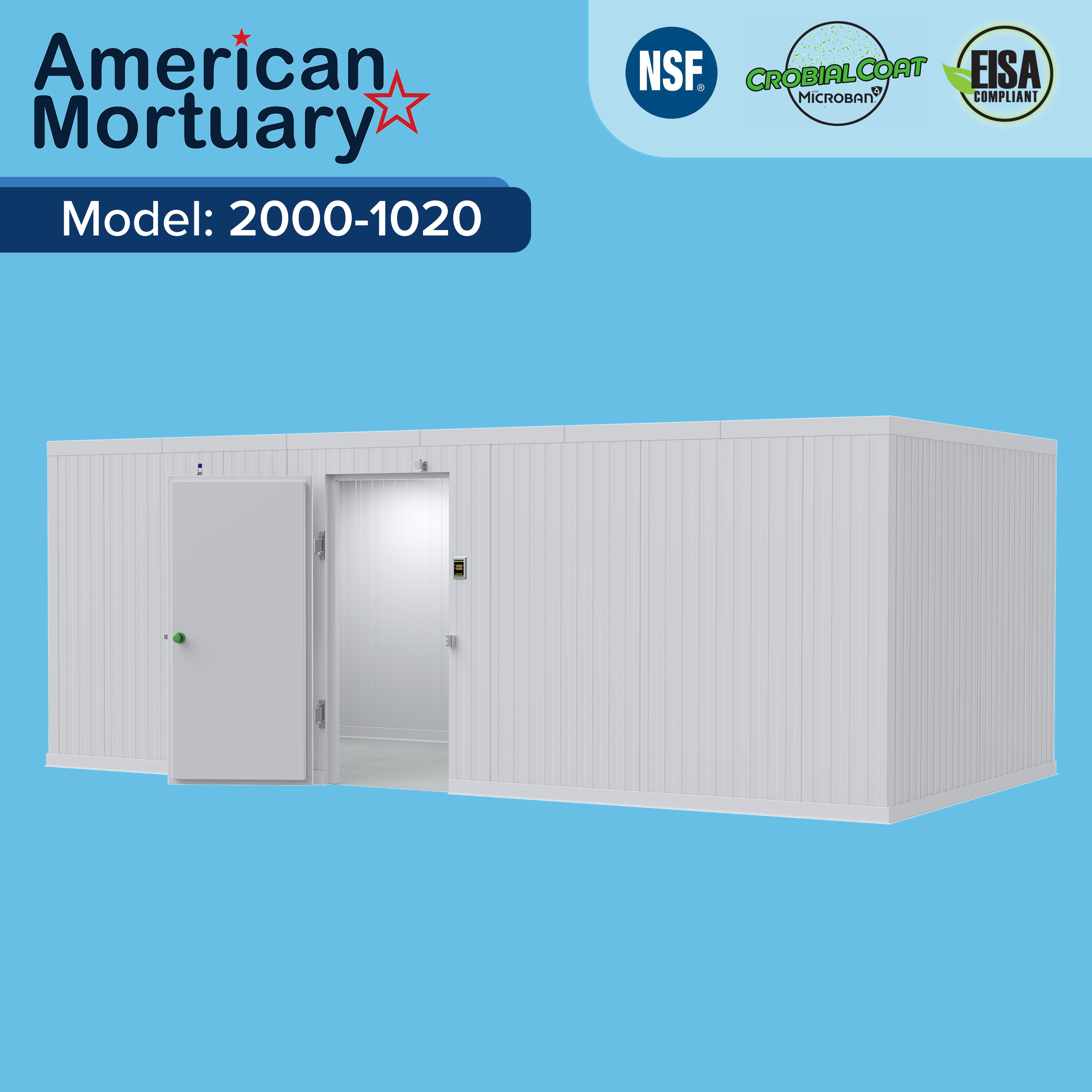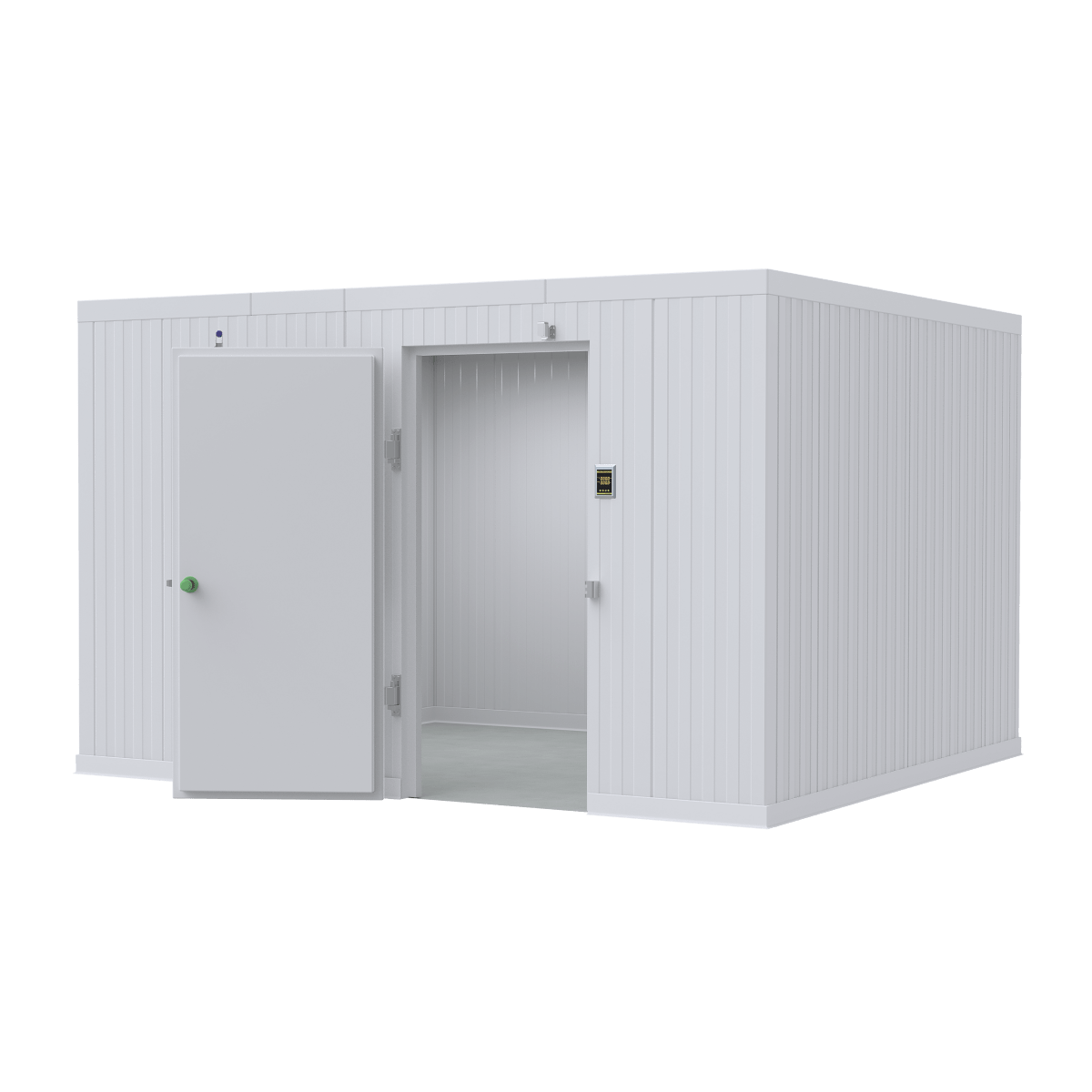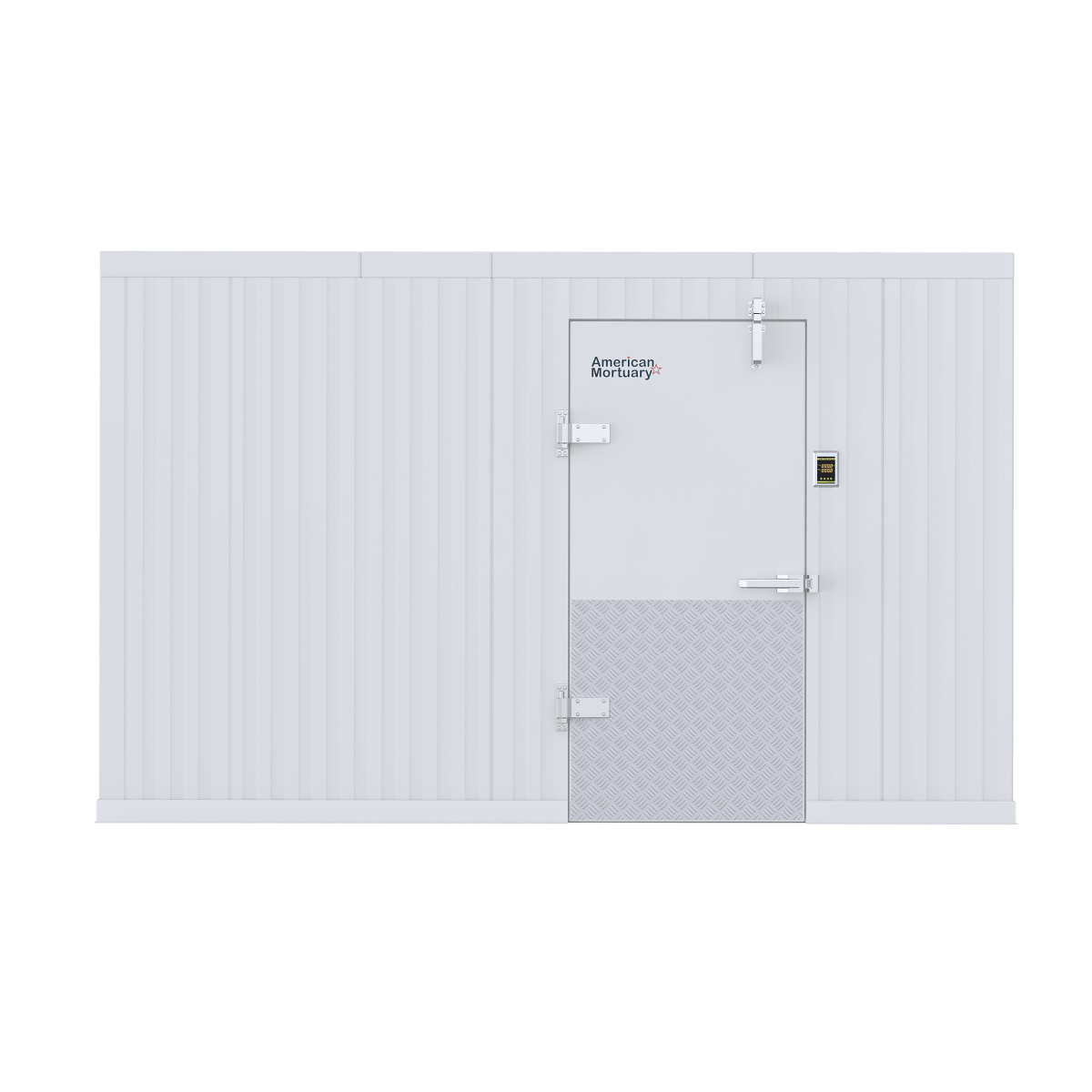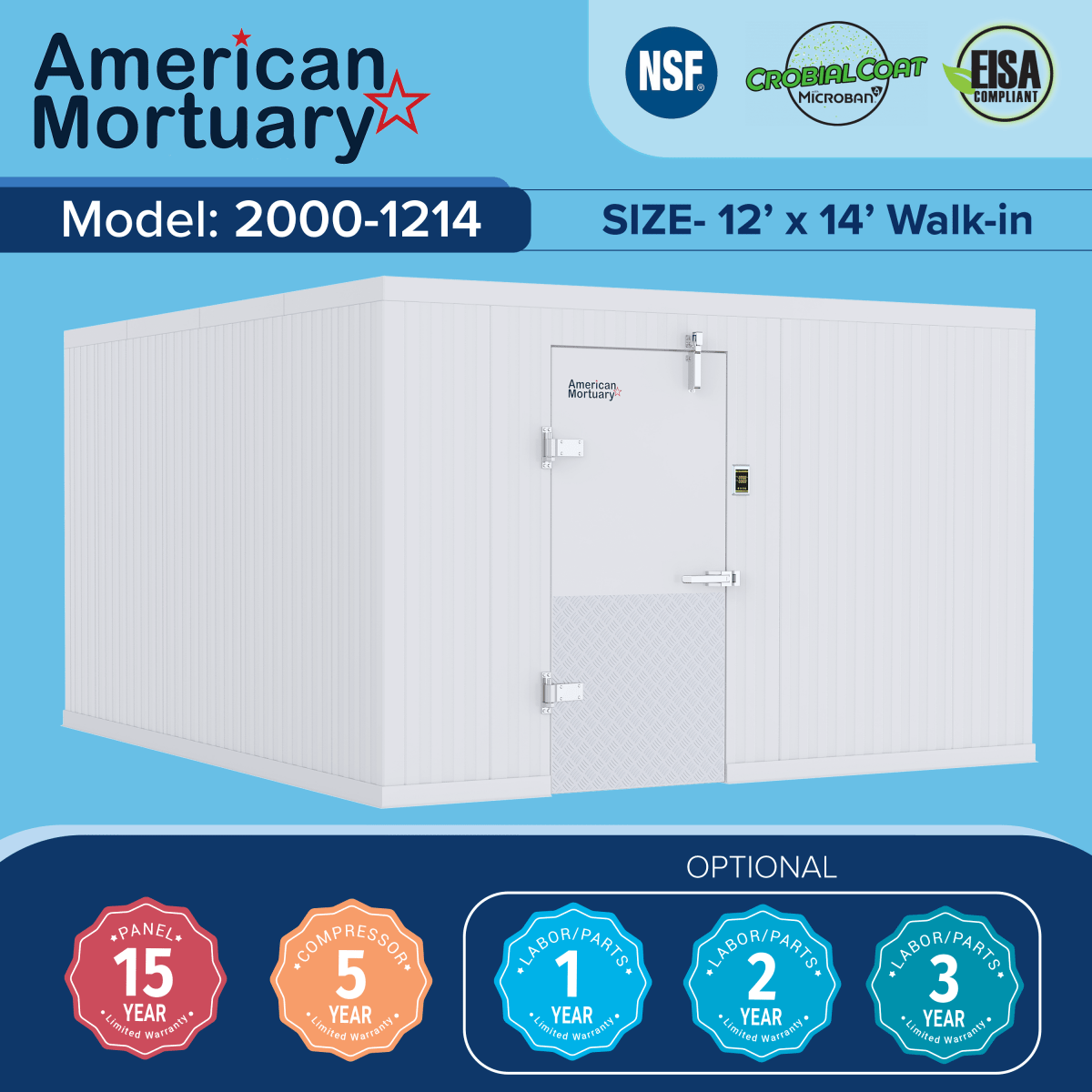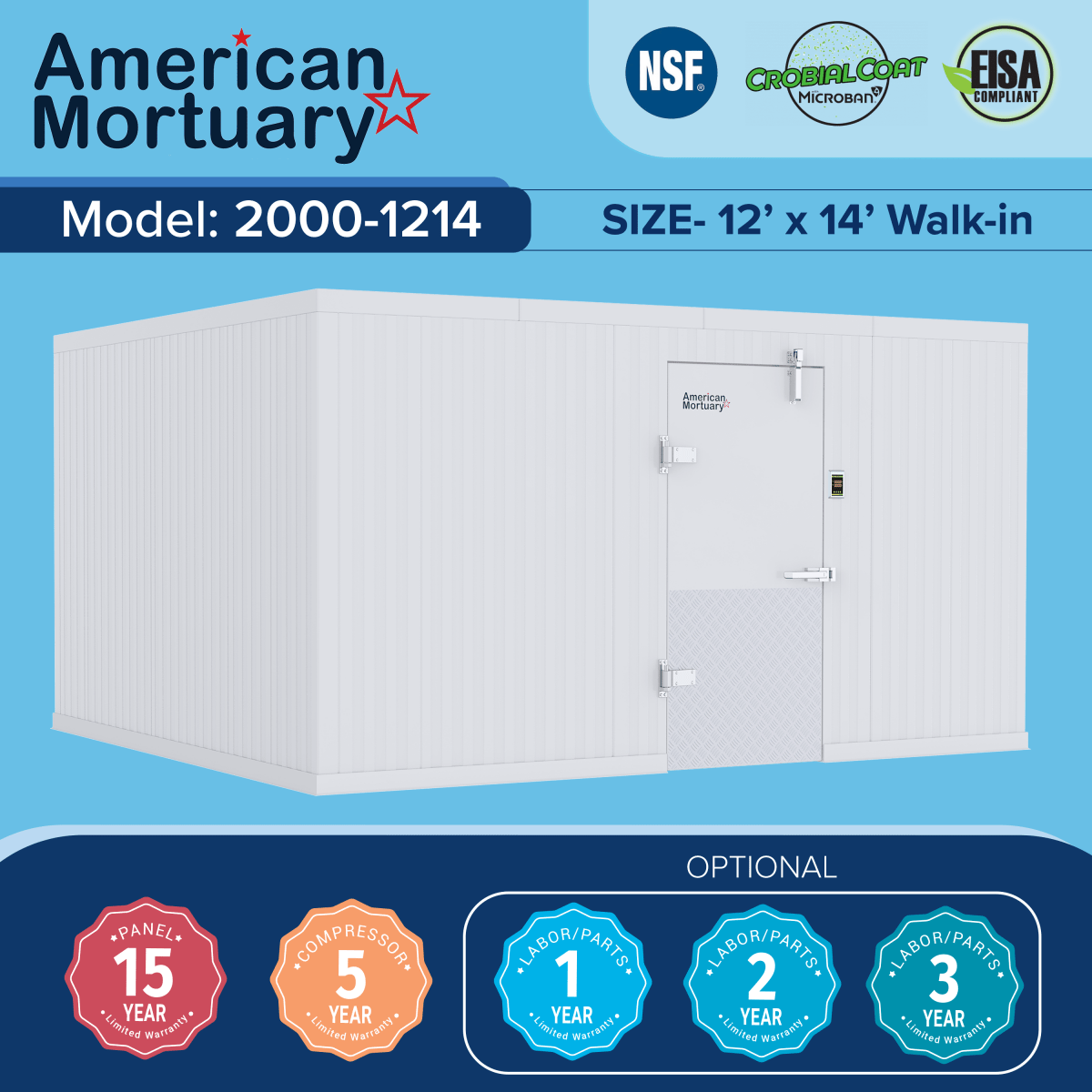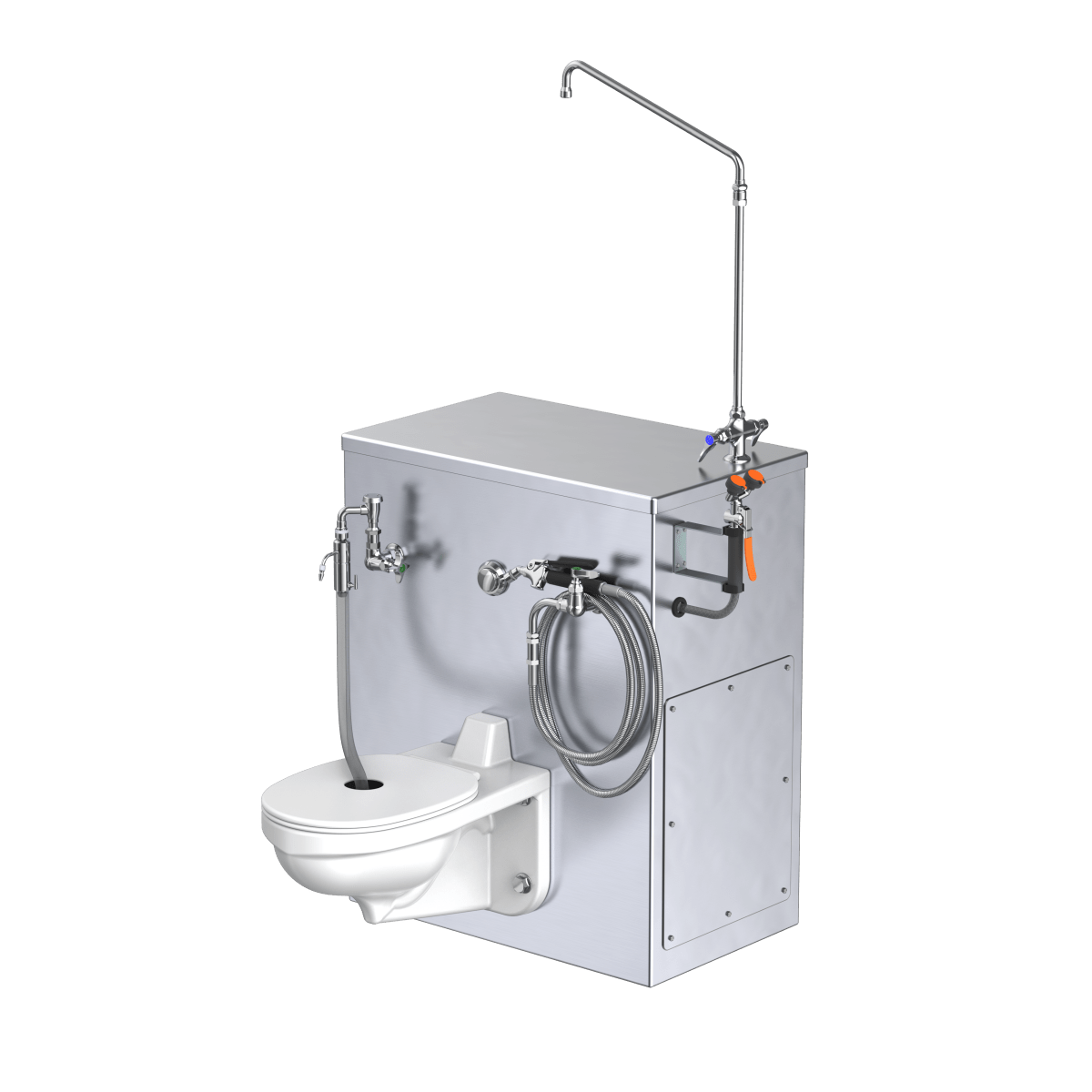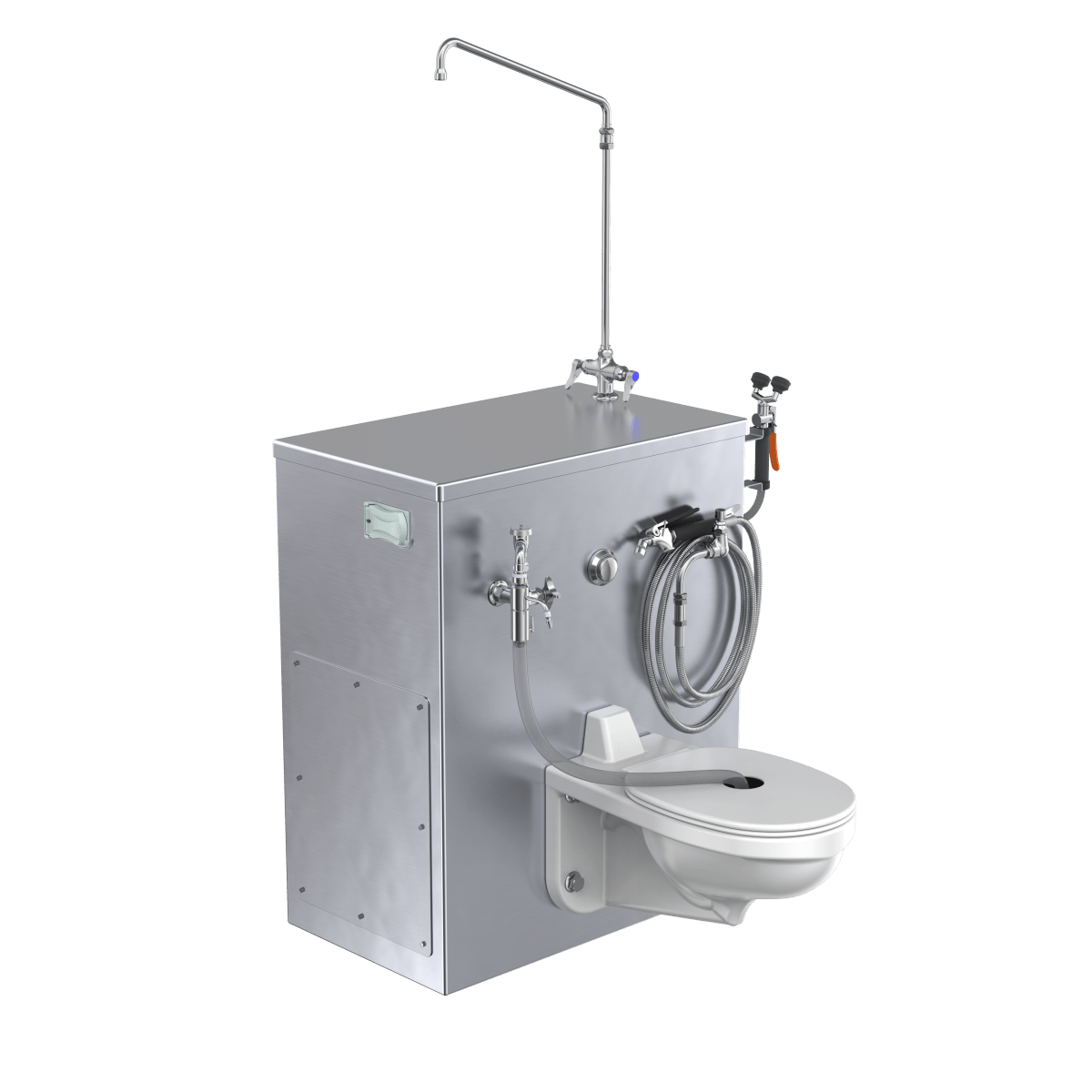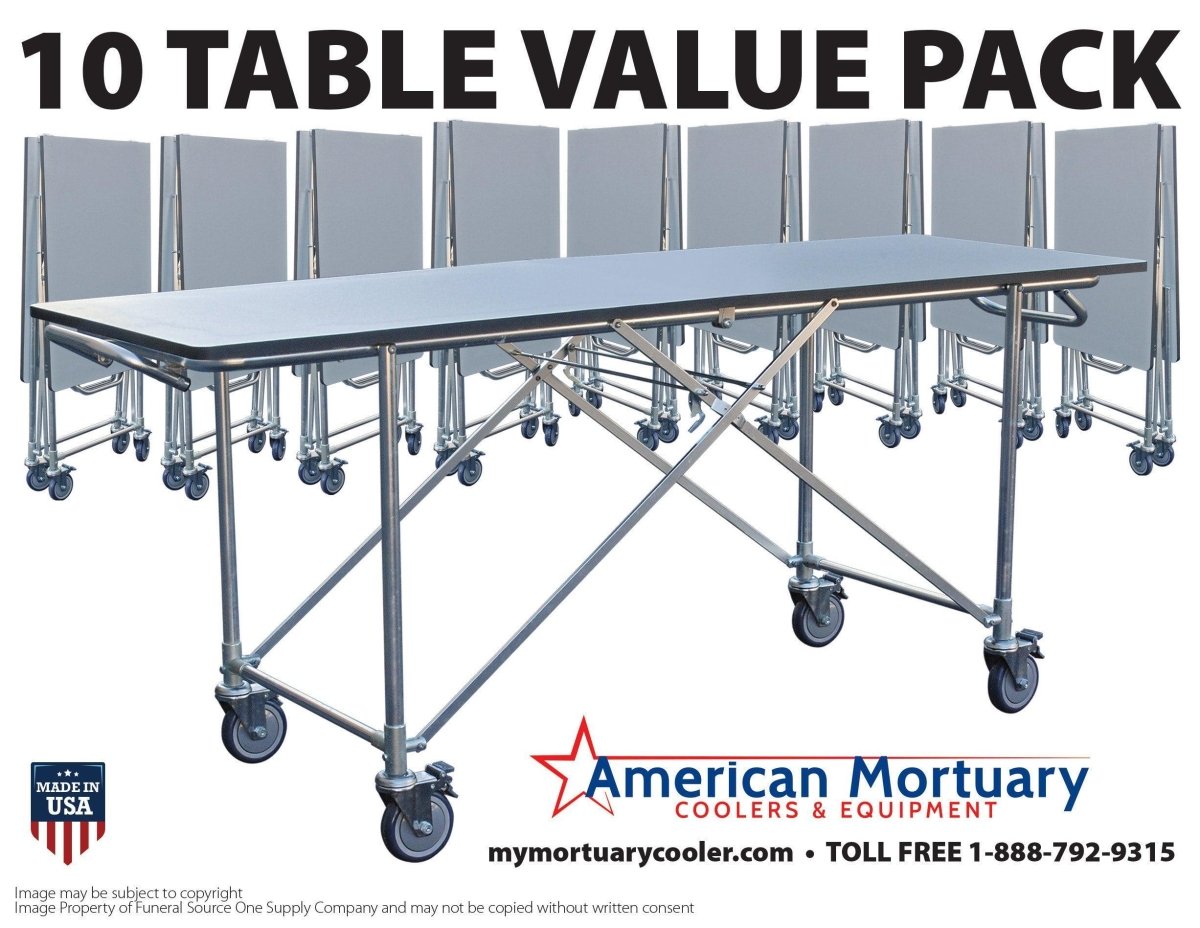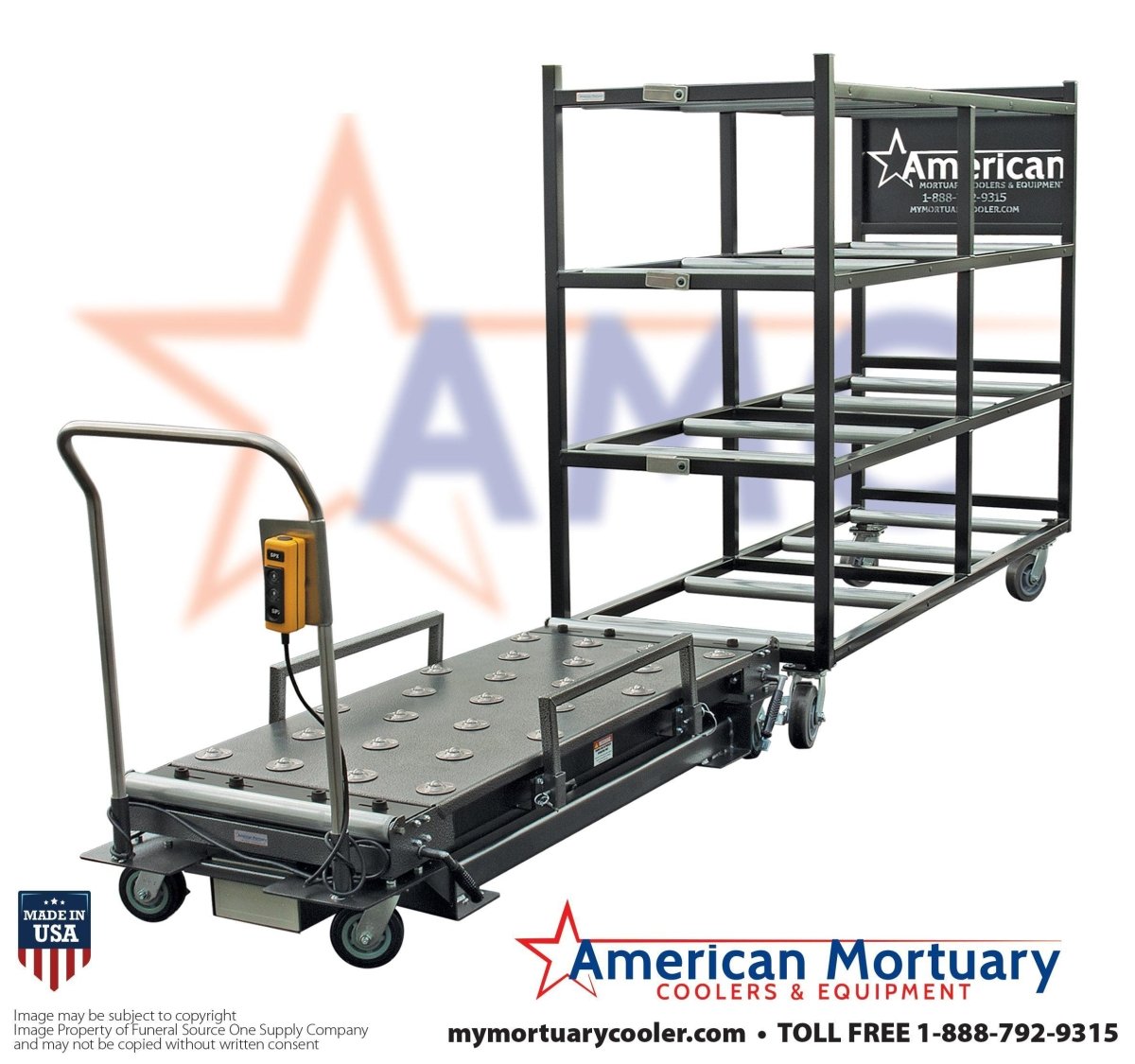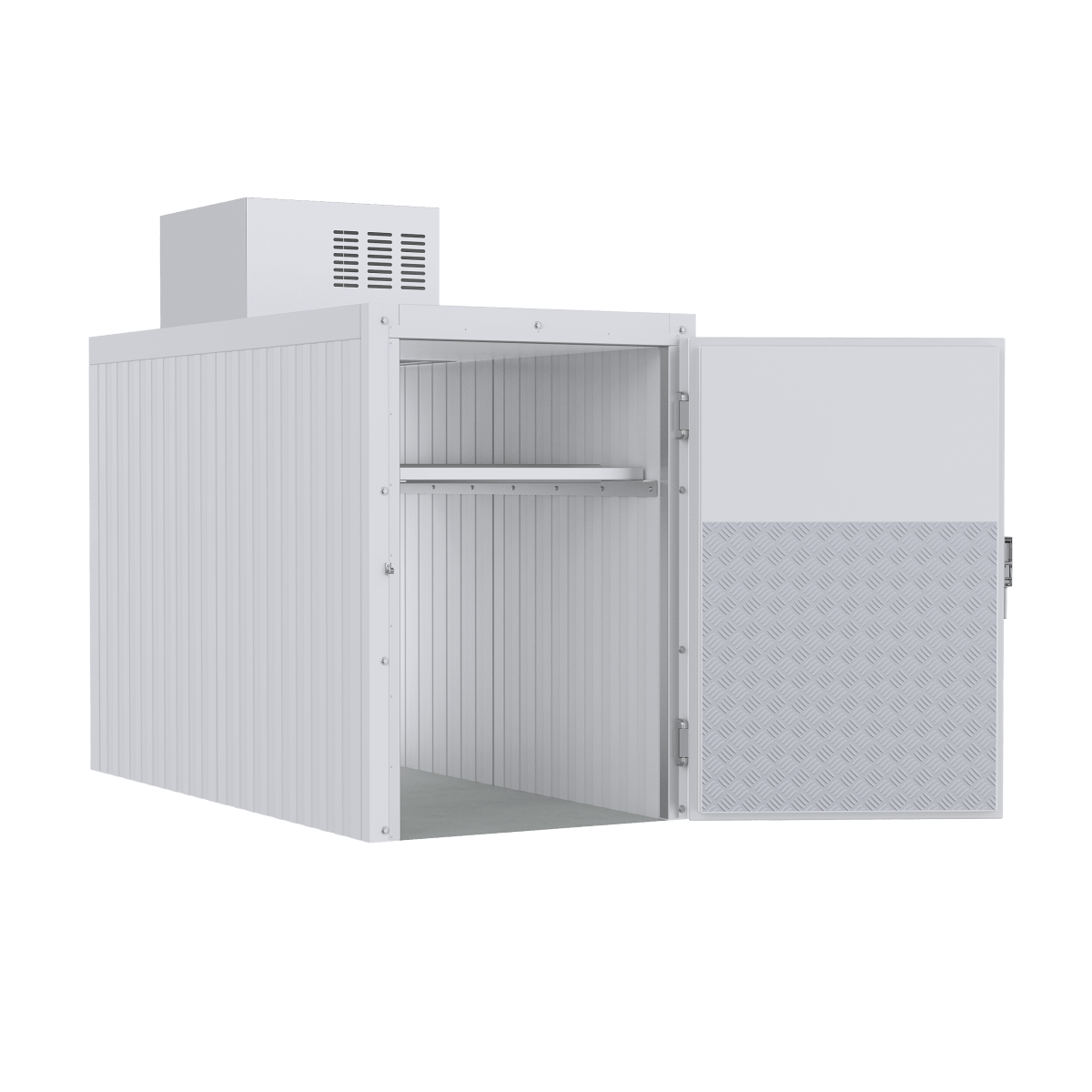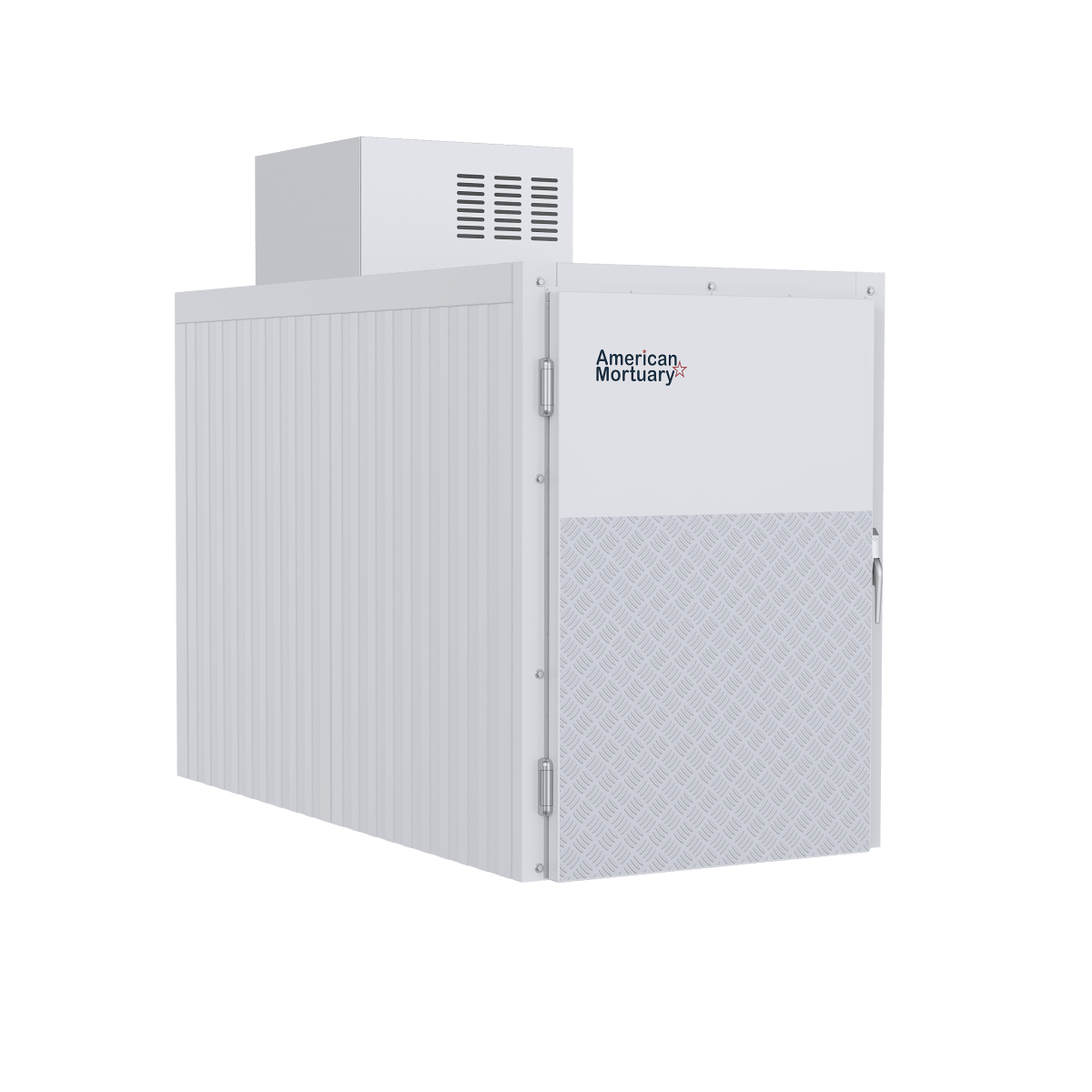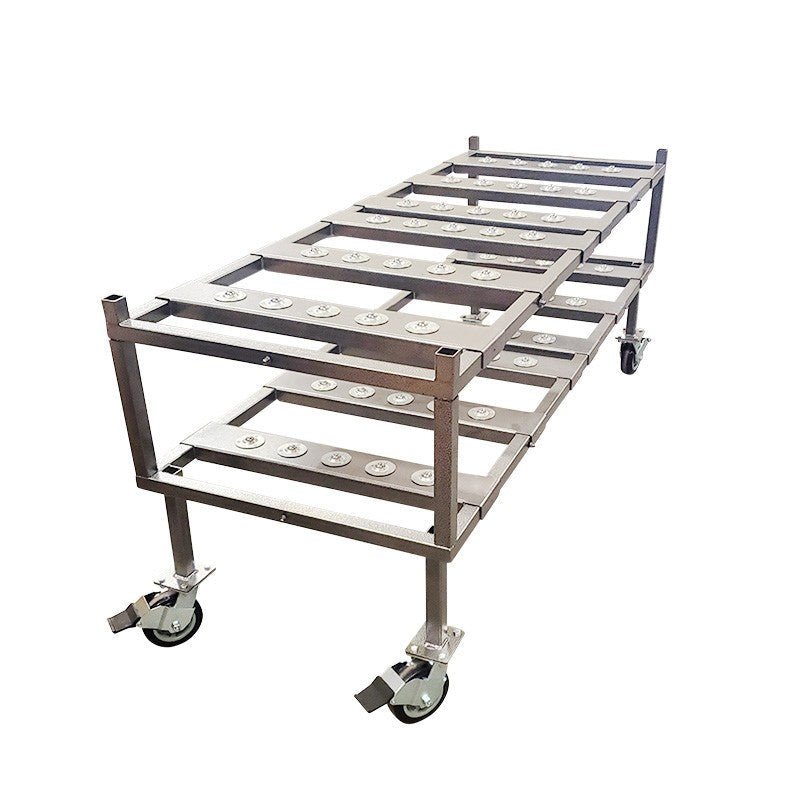The Power Behind Modern Lifting Systems
Hydraulic lift pumps are mechanical devices that convert energy into fluid power, enabling the efficient lifting of heavy loads with minimal input force. These systems form the backbone of countless industrial and commercial applications where reliable, controlled lifting is essential.
What is a hydraulic lift pump?
- A device that converts mechanical energy into hydraulic fluid pressure
- Uses pressurized fluid to multiply force (typically 2,000-5,000 PSI)
- Enables small input forces to move heavy loads
- Works on the principle of positive displacement
- Available in several types: gear, vane, piston, ram, and jet
Whether you're operating heavy machinery in construction, managing a mortuary facility, or working in the oil and gas industry, hydraulic lift pumps provide the consistent power and precision needed for safe, efficient operations.
The basic system consists of a reservoir, pump, valves, and actuators (typically cylinders) working together to transform mechanical input into powerful linear or rotary motion. What makes these systems remarkable is their ability to multiply force through fluid pressure, allowing relatively small motors or manual inputs to move incredibly heavy loads.
I'm Mortuary Cooler, and I've spent over 15 years helping funeral directors select and maintain hydraulic lift pumps for mortuary applications, including cadaver lifts and specialized mortuary transport systems.

Hydraulic lift pumps word guide:
What Are Hydraulic Lift Pumps and How Does the System Work?
Ever wondered what makes those heavy lifting jobs seem almost effortless? That's the magic of hydraulic lift pumps at work! These clever devices transform mechanical energy into hydraulic energy by putting fluid under pressure, creating a powerful force that can move impressive loads with surprising ease.
Most hydraulic lift pumps operate at pressures between 2,000 and 5,000 PSI—that's enough oomph to lift vehicles, construction equipment, or carefully move deceased loved ones in mortuary settings. The secret lies in positive displacement: as the pump runs, it creates a vacuum that draws fluid from a reservoir, then pushes it out under pressure to do the heavy lifting for you.
"I've seen well-maintained hydraulic lift pumps still performing flawlessly after 25 years in the field," shares James Thompson, a hydraulic systems veteran with decades of hands-on experience. "Their reliability is what makes them the backbone of so many industries."

Core Principle: Pascal's Law in Hydraulic Lift Pumps
At the heart of every hydraulic lift pump is a principle finded back in the 17th century—Pascal's Law. This fundamental rule states that pressure applied to an enclosed fluid spreads equally in all directions. It's this principle that gives hydraulic systems their almost magical ability to multiply force.
Here's the fascinating part: when you apply pressure to a small piston in a hydraulic system, that same pressure travels through the fluid to a larger piston. Since the larger piston has more surface area, it experiences greater force—much greater! If your second piston is 10 times larger than the first, you'll get 10 times the force output.
This multiplication effect is why a relatively compact hydraulic lift pump can generate enough power to lift a 3-ton vehicle in your local garage, raise a cadaver in a mortuary setting, or hoist massive steel beams at construction sites. It's also why hydraulics remain the go-to solution when serious lifting power is needed.
Key System Components
Your typical hydraulic lift system is like a well-orchestrated team, with each component playing a crucial role:
The reservoir serves as home base for the hydraulic fluid, giving air bubbles a chance to escape and helping dissipate heat. Think of it as the system's lungs, holding the lifeblood of hydraulic power.
The prime mover provides the initial energy—whether it's an electric motor humming quietly in a mortuary lift, a gas engine powering construction equipment, or even your own muscle power in manual pumps.
At the heart of it all is the hydraulic pump itself, drawing fluid from the reservoir and pressurizing it. This is where the real magic begins, changing ordinary motion into extraordinary power.
The system's traffic controllers are the control valves and check valves, directing fluid where it needs to go and preventing dangerous backflow that could damage your equipment.
The workhorses are the cylinders and actuators, converting all that hydraulic pressure into the lifting motion you actually need. These sturdy components push, pull, and hold loads with impressive precision.
Tying it all together is the hydraulic fluid—typically oil-based—which does far more than just transmit power. It also lubricates moving parts and carries away heat, extending the life of your entire system.
Finally, seals and gaskets work silently but critically, maintaining pressure and preventing leaks that could compromise performance or create messy situations.
At American Mortuary Coolers, we've learned that understanding these components isn't just technical trivia—it's essential knowledge for selecting the right hydraulic lift pump for mortuary applications, where gentle yet firm control, absolute reliability, and dignified handling are paramount concerns.
Main Types of Hydraulic Lift Pumps (Strengths, Limits & Best Fits)
When it comes to hydraulic lift pumps, you've got several distinct designs to choose from - each with its own personality and set of talents. Think of them as team members with different strengths that shine in specific situations.

Let me walk you through the family of pump options and help you understand which might be right for your specific needs:
| Pump Type | Pressure Range | Efficiency | Cost | Best Applications |
|---|---|---|---|---|
| Gear | Up to 250 bar (3,600 PSI) | ~80% | $ | General applications, boom lifts, simple systems |
| Vane | Up to 200 bar (2,900 PSI) | 85-90% | $$ | Indoor equipment, noise-sensitive environments |
| Piston | >350 bar (5,000 PSI) | Up to 95% | $$$ | High-pressure applications, precision control |
| Ram | Varies by design | 60-70% | $ | Simple lifting, water-powered systems |
| Jet | Low pressure | 40-60% | $$ | Oil wells, fluid transfer with entrained gas |
Gear Hydraulic Lift Pumps
If hydraulic lift pumps were cars, gear pumps would be trusty pickup trucks - nothing fancy, but they'll get the job done reliably for years with minimal fuss. These pumps create pressure using two meshing gears that move fluid between their teeth and the housing.
I've installed dozens of these workhorses over the years, and their straightforward design is part of their charm. They're economical both to purchase and maintain, with fewer moving parts that could potentially fail. They'll even tolerate a bit of contamination without throwing a fit - though I wouldn't recommend testing this feature intentionally!
"Gear pumps are often the perfect solution for boom lift retrofits," notes Sarah Chen, our hydraulic systems specialist here at American Mortuary Coolers. "Their simplicity makes them ideal for applications where cost-effectiveness and reliability trump absolute efficiency."
The trade-off? They're not the most efficient option (around 80%), they can be a bit noisy, and they have fixed displacement. But for many standard lifting applications, they're just what the doctor ordered.
Vane Hydraulic Lift Pumps
Vane pumps occupy that sweet middle ground between basic gear pumps and high-end piston models. Picture a slotted rotor with vanes that slide in and out as it turns, creating chambers that expand and contract to move fluid.
These pumps have become my go-to recommendation for funeral homes and hospitals where noise matters. Their smoother, quieter operation shows respect for environments where dignity and atmosphere are paramount. With good efficiency (85-90%) and pressure capabilities up to 200 bar, they handle most mortuary lift applications beautifully.
"We've found that vane pumps are particularly well-suited for mortuary lift applications," explains Dr. Robert Johnson, our engineering director. "Their quieter operation is appreciated in settings where dignity and atmosphere are important considerations."
The downside? They're a bit more high-maintenance than their gear cousins - they don't appreciate contamination and require more attention during servicing. They also cost more upfront, but the quieter operation often justifies the investment for our clients.
Piston Hydraulic Lift Pumps
When clients ask me about the Rolls-Royce of hydraulic lift pumps, I point them toward piston models. Using reciprocating pistons in a cylinder block to pressurize fluid, these sophisticated pumps deliver best performance where it counts.
With efficiency reaching up to 95% and pressure capabilities exceeding 350 bar (5,000 PSI), they're the champions of the hydraulic world. Their variable displacement designs and precise control capabilities make them perfect for demanding applications where precision matters.
I've seen these pumps transform operations in heavy construction and industrial manufacturing settings. Their superior efficiency means that 10 mechanical horsepower translates to 9.5 hydraulic horsepower—a significant advantage that adds up quickly in high-power applications.
Of course, excellence comes at a price. They're the most expensive option upfront, require the most complex maintenance, and they're rather particular about fluid cleanliness. They're also typically larger and heavier than other options.
Recent research has focused on improving piston pump designs for specialized applications. A notable innovation involves a hydraulically driven piston pump with a double-acting mechanism that represses reservoir fluid upward through a channel drilled in the piston, allowing for more efficient operation in challenging conditions like deep well extraction. You can read more about this fascinating innovation in this scientific research on piston innovation.
Ram & Jet Hydraulic Lift Pumps
Beyond the three main types, there are some fascinating specialty hydraulic lift pumps worth mentioning.
Hydraulic ram pumps are marvels of simplicity. Using only the energy of falling water, they can lift water to higher elevations without any external power source. I've installed these for clients in remote locations where electricity isn't available, and they continue to amaze me with their ingenuity.
"The High-Lifter water-powered pump can lift water up to 1,000 feet using as little as one quart per minute of source flow," explains environmental engineer Michael Davis. "It's perhaps the most wonderful way to pump water in the world for off-grid applications."
Jet pumps use the venturi effect and excel in oil and gas applications. They're particularly valuable when handling fluids with entrained gas and can operate in tight horizontal well configurations where space is at a premium.
"Jet pumps have revolutionized offshore oil production," notes petroleum engineer James Wilson. "A single triplex unit can power multiple jet pumps, making them ideal for platform operations where space constraints are significant."
At American Mortuary Coolers, we've seen how choosing the right hydraulic lift pump can make all the difference in the reliability, efficiency, and appropriateness of lifting systems. Whether you're lifting cadavers in a mortuary setting or heavy equipment on a construction site, understanding these differences helps ensure you get exactly the performance you need.
Applications Across Key Industries
Hydraulic lift pumps are the unsung heroes powering critical operations in so many industries today. I've seen how these versatile systems transform work across various sectors, each with their own unique demands and applications.

Oil & Gas Production
The oil and gas industry simply couldn't function without hydraulic lift pumps in their artificial lift systems. When Mother Nature doesn't provide enough natural pressure to bring oil to the surface, these pumps step in to do the heavy lifting—literally! Operating at jaw-dropping pressures between 2,000 and 5,000 PSI, they overcome the immense forces involved in deep well extraction.
You'll typically find three main pump configurations out in the oil fields:
Free Parallel Pumps are the maintenance crew's best friend. A single operator can retrieve them by simply manipulating the wellhead valve, avoiding the headache of pulling the entire assembly for routine work.
Insert Pumps are the reliable workhorses of vertical wells. They typically feature a 2⅜-inch tubing size and seat snugly against a tubing nipple, providing dependable service year after year.
Jet Pumps are the clever solution for offshore and horizontal completions. Using a venturi mechanism, a single triplex unit can power multiple wells—a game-changer for space-constrained offshore platforms.
What I find truly remarkable about these systems is their production ratio. For every three barrels of power fluid pumped downhole, about five barrels come back up—with those extra two barrels representing fresh production from the well. Talk about efficiency!
"The 'hop' technique has saved us thousands in downtime costs," shared Tom Jenkins, a veteran oil field supervisor I spoke with recently. "Just by briefly adjusting the wellhead valve to lift the pump slightly, we can dislodge debris without a full retrieval operation."
Want to hear what real pumpers have to say? Check out Greasebook's "Pumper Wall of Love" by clicking here.
Heavy Machinery & Construction
Construction sites worldwide rely on hydraulic lift pumps as the muscle behind everything from excavators and bulldozers to towering cranes and concrete pumps. These applications demand tough, high-pressure systems with fingertip precision, even when moving massive loads.
In boom lifts and scissor lifts, hydraulic systems walk a careful line between power and safety. External gear pumps often find their way into cost-effective retrofits, while vane pumps keep things quiet for indoor operations. When the heaviest lifting comes into play, piston pumps deliver the high pressure needed to get the job done.
Maria Rodriguez, a construction equipment specialist I consulted, put it perfectly: "Pressure requirements are just the starting point when selecting a hydraulic system for construction equipment. You've got to think about duty cycle, environmental exposure, and control precision—especially for operations like crane positioning where safety is non-negotiable."
Curious about the secrets behind scissor lifts? Learn more about scissor lift secrets and choosing the perfect hydraulic lift.
Automotive & Diesel Performance
In the automotive world, hydraulic lift pumps play dual roles. They power the service equipment that keeps vehicles maintained, and they're also vital components within the vehicles themselves.
Diesel fuel lift pumps are specialized hydraulic pumps that draw fuel from the tank and deliver it to the injection system at pressures between 6 and 65 PSI. For the performance enthusiasts out there, sizing these pumps correctly is crucial:
Need to support up to 500 horsepower? A 95-100 GPH (gallons per hour) lift pump will do the trick. Pushing toward 800 horsepower? You'll want a 150-165 GPH system. And for those monster builds exceeding 1,000 horsepower, nothing less than a 200+ GPH system will suffice.
"Aftermarket lift pumps aren't just about squeezing out more performance," explained diesel specialist Chris Johnson during a recent shop visit. "They're preventive maintenance, plain and simple. Factory lift pump failures in 1998-2002 Dodge Ram models often led to catastrophic injection pump damage. A quality aftermarket system gives you better filtration, air removal, and pressure that doesn't quit when you need it most."
Mortuary & Specialized Lifting
Here at American Mortuary Coolers, we've developed a deep understanding of the unique requirements in mortuary operations. Hydraulic lift pumps power essential equipment in this specialized field, including cadaver lifts for cooler storage systems, hydraulic body trolleys for dignified transport, adjustable-height preparation tables, and vehicle loading systems.
These applications demand absolute reliability, precise control, and whisper-quiet operation. Take our battery-operated hydraulic cadaver lifts, for example—they must function flawlessly while supporting the combined weight of the deceased and the storage tray, all while maintaining the dignity of the situation.
"In mortuary applications, hydraulic systems must balance power with dignity," our lead engineer often reminds our team. "That's why our M678 Battery Operated Hydraulic Cadaver Lift incorporates a controlled hydraulic system allowing smooth, quiet operation with precise positioning capabilities."
When designing hydraulic systems for mortuary use, we focus on several key factors: biohazard protection and easy cleaning, quiet operation appropriate for solemn environments, battery backup options for uninterrupted service, and smooth, controlled movement for dignified handling.
Want to learn more about how hydraulic systems are changing mortuary services? Check out our guide on Lift Your Service: Hydraulic Body Lifts and Stretchers.
Selecting the Right Hydraulic Lift Pump for Your Job
Finding the perfect hydraulic lift pump for your specific needs doesn't have to be complicated, but it does require some thoughtful consideration. Think of it like choosing the right tool for a home project – with the right selection, you'll enjoy years of reliable service and avoid the headaches of downtime and costly repairs.

Power Source Options for Hydraulic Lift Pumps
The heart of any hydraulic system is its power source, and you've got several excellent options to consider.
Manual hydraulic pumps offer simplicity and portability. I've seen these hand pumps save the day in remote locations where electricity isn't an option. They're perfect for occasional use, though your arms might remind you the next day that you've put in some work! Some facilities keep these as reliable backups – they never fail when the power goes out.
Electric hydraulic pumps are the workhorses of the industry. They hum along quietly in the background of funeral homes across America, providing consistent power without drawing attention to themselves. One of our clients in Mississippi switched from a manual to a 110V electric system and told me, "I should have done this years ago – my back thanks you!"
Air-powered pumps have found their niche in environments where electrical sparks could pose hazards. If your facility already has compressed air infrastructure, these systems can be remarkably cost-effective while offering simple maintenance.
Gas-powered options shine in remote applications. While they're not ideal for indoor use due to noise and exhaust concerns, they provide best mobility and independence from external power sources. One cemetery groundskeeper told me his portable gas-powered system was "worth its weight in gold" during outdoor services.
Water-powered hydraulic pumps represent the eco-friendly option. Using natural water flow to generate lifting power, these systems work wonderfully in off-grid applications with adequate water sources. They're the unsung heroes of sustainable hydraulic systems.
"For mortuary applications specifically, we typically recommend electric hydraulic systems with battery backup," explains our technical director at American Mortuary Coolers. "This provides the quiet, reliable operation needed in funeral home settings while ensuring functionality during those inevitable power outages."
You can explore additional hand pump options at HYJACKS.COM/HAND PUMPS PAGE/hpumps.htm for specialized applications.
Key Selection Criteria & Sizing Steps
When helping funeral directors choose the right hydraulic lift pump, I always start with these essential considerations:
Pressure requirements form your foundation. This isn't just about power – it's about calculating exactly how much force you'll need based on the weight you're lifting and the cylinder size you're using. For most mortuary lifts, we find systems rated between 1,500-3,000 PSI provide the ideal balance of power and control.
Flow rate needs determine how quickly your system will operate. Nobody wants a cadaver lift that moves at a glacial pace – or worse, one that moves too quickly for dignified handling. We carefully match flow rates to ensure smooth, controlled movement appropriate for solemn settings.
Duty cycle considerations are often overlooked but critically important. A system that works perfectly for occasional use might fail prematurely if run continuously. Be honest about how often you'll use the equipment.
Environmental conditions matter tremendously. The humid conditions of a Florida funeral home require different considerations than the freezing winters of Minnesota. We've seen improperly specified systems fail within months when environmental factors weren't considered.
Efficiency requirements might seem like a luxury, but they translate directly to your bottom line. Higher-efficiency piston pumps cost more initially but can save thousands in energy costs over their lifetime – something to consider for frequently used systems.
Noise constraints are particularly important in mortuary settings. I'll never forget the funeral director who called me saying, "This lift sounds like a garbage truck – we can't use it during viewings!" Vane pumps offer significantly quieter operation when needed.
Control precision becomes critical when positioning is important. For preparation tables and specialized lifts, the ability to make fine adjustments can make all the difference in the dignity of your service.
Maintenance access is something you'll appreciate later. Ensure your pump can be easily serviced without major disruption to your facility.
Reservoir sizing follows a simple rule of thumb – typically 3-5 times your flow rate in gallons per minute provides adequate cooling and prevents fluid degradation.
Contamination control protects your investment. In mortuary environments where cleaning chemicals are common, proper filtration prevents system deterioration.
For a deeper dive into selection criteria, check out The Definitive Guide to Choosing a Hydraulic Lift Pump where we explore these factors in greater detail.
At American Mortuary Coolers, we've developed our selection process through years of hands-on experience in funeral homes across the country. Whether you're dealing with the unique challenges of Gulf Coast humidity or high-altitude operations in Colorado, we'll help you find the hydraulic lift pump that perfectly matches your specific needs.
Maintenance, Troubleshooting & Safety for Hydraulic Lift Pumps
Let's face it—even the best hydraulic lift pumps need a little TLC to keep them running smoothly. I've seen how proper maintenance not only extends the life of these powerful workhorses but also prevents those heart-stopping moments when equipment fails at the worst possible time.

Routine Maintenance Checklist for Hydraulic Lift Pumps
Think of your maintenance schedule as preventive medicine for your hydraulic system. At American Mortuary Coolers, we've developed a rhythm that keeps our equipment humming along beautifully.
Your daily checks should become second nature—a quick visual scan for leaks (they always seem to appear overnight!), checking that reservoir fluid level (aim for at least half full), and using your ears to catch any unusual sounds. Those strange noises are your pump's way of crying for help before bigger problems develop.
On a monthly basis, dig a little deeper. The color and smell of hydraulic fluid can tell you a lot—dark, cloudy fluid with a burnt smell is begging to be changed. I remember visiting a funeral home where the fluid looked more like chocolate milk than hydraulic oil—a sure sign of water contamination that would have led to pump failure within weeks.
Don't forget to check those battery levels if you're running battery-powered systems. A reading between 12.0-13.4V indicates a healthy charge—anything lower and you're risking failure during a critical lift.
When it comes to quarterly maintenance, filter changes are non-negotiable. Think of filters as the kidneys of your hydraulic system—when they get clogged, the whole body suffers. I once watched a technician shake out a filter that hadn't been changed in two years—the amount of metal particles that fell out explained exactly why their system was struggling!
Your annual service should be comprehensive—a full fluid change using only manufacturer-approved fluids (this isn't the place to pinch pennies), complete pressure testing, and thorough inspection of all seals and cylinders.
"I've seen people try to save money by using automotive transmission fluid instead of proper hydraulic fluid," shared one of our maintenance specialists with a chuckle. "They saved $20 on fluid but spent $2,000 replacing seals and cleaning the system afterward."
Common Issues and Quick Fixes
Even with religious maintenance, hydraulic lift pumps occasionally develop attitudes. Here's how to handle the most common complaints:
When your pump refuses to build pressure, start with the obvious—check fluid levels and look for foamy fluid in the reservoir (a telltale sign of air in the system). Relief valve settings might have drifted, or you could be dealing with internal leakage from worn components.
Is your system moving like it's stuck in molasses? Slow operation typically points to restrictions in hydraulic lines or worn pump components. Temperature can play a surprising role here too—fluid that's too thick for the operating conditions will definitely cause sluggishness.
Nothing gets attention faster than a noisy hydraulic system. That distinctive whining or chattering usually means air has infiltrated your system (cavitation), or you might have pump alignment issues. Proper fluid levels are crucial here—a pump that's sucking air will let you know with an unmistakable racket.
When things get hot—literally—you've got an overheating issue. Clean those heat exchangers and cooling fins (they collect dust like my grandmother collected teacups), and check for internal leakage causing pressure drops. Many systems I've serviced were simply being pushed beyond their rated pressure capacity—like trying to make your family sedan tow a semi-trailer.
Erratic movement is particularly concerning in mortuary applications where smooth, dignified handling is essential. Air in the system is often the culprit, but worn control valves and binding mechanical components can also cause jerky operation.
Safety Best Practices When Operating Hydraulic Lift Pumps
Working with hydraulic lift pumps means respecting the tremendous forces involved. These systems operate at pressures that can turn a pinhole leak into a deadly injection hazard.
Never, ever check for leaks with your bare hands. I still remember a technician who thought his gloves would protect him—the high-pressure fluid penetrated both the glove and his skin, requiring emergency surgery to prevent tissue death. Use cardboard or paper to detect leaks safely—it's a simple habit that could save your hand.
Lockout-tagout procedures aren't just bureaucratic red tape—they're life-saving protocols. Always de-energize and depressurize systems before maintenance, and use proper lockout devices and tags. In a busy funeral home environment, clear communication about equipment being serviced is absolutely critical.
Your personal protective equipment is your last line of defense. Safety glasses protect against unexpected fluid sprays, while appropriate gloves and footwear prevent both injuries and slips. I've seen too many people learn this lesson the hard way—hydraulic fluid on a smooth floor creates an ice rink-like hazard.
Proper training isn't optional—it's essential. Everyone who operates hydraulic equipment should understand not just which buttons to push, but why systems behave as they do and what to do when things go wrong. At American Mortuary Coolers, we include basic operational training with every installation because we know how important this knowledge is.
"In mortuary settings, we emphasize the importance of those floor locks on hydraulic cadaver lifts," our safety coordinator often reminds clients. "Always engage them fully before loading or unloading—it takes just seconds but prevents the kind of unintended movement that could compromise dignified handling or, worse, cause injury."
Safety features exist for a reason. Relief valves, pressure switches, and interlocks aren't suggestions—they're critical safeguards designed by engineers who understand the physics involved. Bypassing them for convenience is like removing your car's brakes because they slow you down too much.
With proper maintenance, troubleshooting know-how, and a healthy respect for safety, your hydraulic lift pumps will provide years of reliable service—and that's something we can all lift a glass to.
Innovations & Sustainability Trends in Hydraulic Lift Pumps
The world of hydraulic lift pumps is experiencing a remarkable evolution. Gone are the days of inefficient, environmentally questionable systems that simply got the job done. Today's innovations focus on smarter operation, sustainability, and integration that's changing how industries approach hydraulic power.

Smart Hydraulics and IoT Integration
Remember when hydraulic systems were purely mechanical beasts? Those days are fading fast. Modern hydraulic lift pumps now come alive with sensors and connectivity that transform how we use and maintain them.
"Smart hydraulic systems can reduce downtime by up to 30% through predictive maintenance," explains automation specialist Dr. Emily Chen. "By detecting subtle changes in performance before catastrophic failure occurs, these systems allow for planned maintenance rather than emergency repairs."
We're seeing this revolution at American Mortuary Coolers. Our newest mortuary lift systems now include subtle but powerful monitoring capabilities that alert funeral professionals to potential issues before they become problems. Imagine getting a simple notification that your hydraulic fluid is showing early signs of contamination—weeks before it would cause a system failure during a critical moment with a family present.
These smart systems monitor pressure, temperature, and flow rates in real time, building a performance history that helps predict exactly when maintenance will be needed. For busy funeral directors, this means one less worry in their demanding day.
Energy Efficiency Improvements
The efficiency gains in modern hydraulic lift pumps are nothing short of impressive. Variable displacement technology has been a game-changer—these clever pumps actually adjust their output based on demand, significantly reducing energy consumption during lighter loads. It's like having a car engine that automatically uses less fuel when you're cruising rather than accelerating.
"The efficiency gap between hydraulic and electric systems is narrowing," notes engineering researcher Maria Lopez. "With variable displacement pumps achieving up to 95% efficiency and regenerative systems recapturing energy, modern hydraulics can be surprisingly eco-friendly."
Beyond variable displacement, we're seeing regenerative systems that capture and reuse energy from descending loads (similar to how hybrid cars recapture braking energy), improved sealing technology that prevents internal leakage, and advanced composite materials that reduce weight and friction while lasting longer than traditional components.
Environmental Sustainability
At American Mortuary Coolers, we've noticed a growing concern among funeral professionals about the environmental impact of their operations. That's why we've acceptd the industry's move toward greener hydraulic solutions.
Biodegradable hydraulic fluids derived from plant bases are replacing traditional petroleum-based options. These fluids perform just as well but break down naturally if they ever leak or spill—crucial for funeral homes located near water sources or protected lands.
"For our mortuary cooling and lifting systems in environmentally sensitive areas, we've transitioned to biodegradable hydraulic fluids," shares our environmental compliance officer. "These provide the same performance while reducing environmental risk."
Some systems are taking sustainability even further with water-based hydraulic systems that use specially formulated additives instead of oil. And for truly remote locations, the ingenious High-Lifter pump uses flowing water's own energy to generate lifting power without electricity or fossil fuels—perfect for off-grid settings where traditional power sources aren't available.
Miniaturization and Integration
The days of sprawling hydraulic systems with components spread across a large footprint are giving way to neat, compact solutions. Today's trend is toward all-in-one units that combine reservoir, pump, valves, and controls in single packages that take up minimal space.
Electro-hydraulic actuators merge electric and hydraulic technologies in self-contained units, while micro-hydraulic systems are enabling applications that would have been impossible with bulkier traditional components.
For mortuary applications, this miniaturization means more discreet, space-efficient lifting solutions that don't dominate limited preparation room space. A compact hydraulic lift pump can now be neatly integrated into a body lift or preparation table without sacrificing power or reliability—something our customers at American Mortuary Coolers particularly appreciate in smaller facilities.
The future of hydraulic lift pumps is cleaner, smarter, and more efficient—a welcome evolution for an industry that's been the backbone of modern lifting for generations.
Frequently Asked Questions about Hydraulic Lift Pumps
What advantages do hydraulic lift pumps have over mechanical or screw lifts?
When funeral directors ask me about switching to hydraulic lift pumps, I always highlight the remarkable benefits they offer compared to traditional mechanical systems.
First and foremost, the force multiplication is truly impressive. Thanks to Pascal's principle, even a small hydraulic pump can generate tremendous lifting power—something that's invaluable when handling heavier deceased individuals with dignity and care.
The flexible power transmission is another game-changer. Unlike rigid mechanical systems, hydraulic lines can easily route around corners and obstacles in tight mortuary spaces, reaching multiple lifting points without complicated linkages.
"I was skeptical about switching from our old mechanical lift," shares Michael, a funeral director from Oregon. "But the smooth, controlled movement of our new hydraulic system has made such a difference in how we transfer the deceased. Families notice that extra touch of dignity."
Built-in overload protection through pressure relief valves gives you peace of mind, preventing damage if weight limits are exceeded. And the incompressible nature of hydraulic fluid allows for exceptionally smooth, precise movements—a critical feature when respectful handling matters most.
For mortuary settings where gentle, dignified handling is paramount, hydraulic lift pumps simply outperform mechanical alternatives in every meaningful way.
How do I calculate the flow and pressure my application needs?
Getting the right specifications for your hydraulic lift pump doesn't need to be complicated, though it does require some straightforward calculations.
For pressure requirements, start by determining how much weight you'll need to lift. In a mortuary setting, this typically includes the deceased person plus the weight of the tray or container. Once you know the total force needed, divide it by the cylinder area (which you can calculate using the bore diameter) to determine the required pressure in PSI.
Flow rate calculations help determine how quickly your lift will operate. This involves calculating cylinder volume and factoring in your desired speed of operation. For example, if you're using a standard mortuary lift with a 2-inch bore cylinder to raise 400 pounds:
The pressure calculation would look like: Area = 3.14 square inches Required pressure = 400 ÷ 3.14 = approximately 127 PSI
"Always build in a generous safety margin," advises Tom, our hydraulic specialist who's been designing mortuary systems for over 15 years. "I recommend multiplying your calculated pressure by at least 1.5 to account for unexpected weight variations and system inefficiencies."
For many funeral homes, a system rated for 500-1000 PSI provides ample lifting capacity while maintaining smooth, controlled operation. If you're ever unsure about your specific needs, our team at American Mortuary Coolers is always happy to help with the calculations.
What environmental factors should I consider before installing a hydraulic lift pump?
The environment where your hydraulic lift pump operates can dramatically affect its performance and longevity. This is something we've learned after installing systems in every climate across the continental United States.
Temperature is perhaps the most critical factor. In Minnesota funeral homes, we've seen hydraulic fluid become sluggish during winter, requiring special low-temperature formulations. Conversely, in Arizona, high ambient temperatures can cause standard fluids to break down more quickly. Your system should be designed with your local temperature extremes in mind.
Humidity is another important consideration, especially in coastal and southern regions. One funeral director in Louisiana found that standard components were corroding within a year due to the high humidity. We switched him to stainless fittings and sealed reservoirs, extending his system life dramatically.
Dust and particulates are silent killers of hydraulic systems. For preparation rooms where powder-based products are used, improved filtration systems protect the hydraulic fluid from contamination.
"The chemicals used in embalming and preparation can be particularly hard on standard hydraulic components," explains Sarah, our engineering lead. "We've developed specialized seal materials that resist these chemicals, substantially extending the maintenance intervals for mortuary applications."
Indoor versus outdoor installation also matters significantly. For outdoor crematory lifts, we typically include weather protection and heating elements to maintain proper fluid temperature year-round.
At American Mortuary Coolers, we don't believe in one-size-fits-all solutions. We carefully consider your specific environmental conditions to customize a hydraulic lift pump system that will provide years of reliable, dignified service—whether you're in the humid Southeast or the arid Southwest.
Conclusion
Hydraulic lift pumps have earned their place as the unsung heroes of lifting operations across countless industries. There's something remarkably dependable about these systems – they offer that perfect sweet spot of power, reliability, and precise control that's hard to match with any other technology. From the dusty oil fields of Texas to the quiet dignity of funeral homes nationwide, these versatile workhorses continue to evolve while staying true to their fundamental strengths.
Here at American Mortuary Coolers, we've built our reputation one careful installation at a time. We don't just sell equipment – we provide custom, durable hydraulic lifting solutions custom specifically to the unique and sensitive needs of the funeral industry. I'm particularly proud that we deliver nationwide across all 48 contiguous states, ensuring that funeral professionals from the mountains of Tennessee to the beaches of California can access the specialized equipment they need.
I've seen how understanding the principles we've covered in this guide helps funeral directors make smarter decisions about their equipment. Whether you're selecting your first hydraulic system, maintaining equipment you've had for years, or troubleshooting an unexpected issue, this knowledge directly translates to improved safety, efficiency, and equipment longevity.
Our team of experts is always ready to help with specialized assistance for mortuary hydraulic systems. Need a custom cadaver lift designed for your unique space? Looking for transport equipment that combines strength with dignity? We've got you covered. With service locations in every region – from our headquarters in Johnson City, TN, to centers in Los Angeles, New York, and points between – American Mortuary Coolers delivers the expertise and equipment funeral professionals have come to rely on.
I've learned over the years that there's no substitute for doing things right. Proper selection, careful installation, regular maintenance, and correct operation – these are the cornerstones that maximize the benefits of hydraulic lift pumps while ensuring they'll provide safe, reliable service for years to come.
If you're looking for more specific guidance for your mortuary facility, I'd encourage you to check out our comprehensive resource on your one-stop shop for mortuary coolers. We're here to help whenever you need us.


